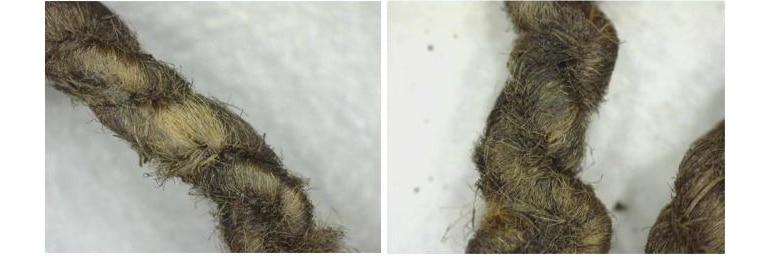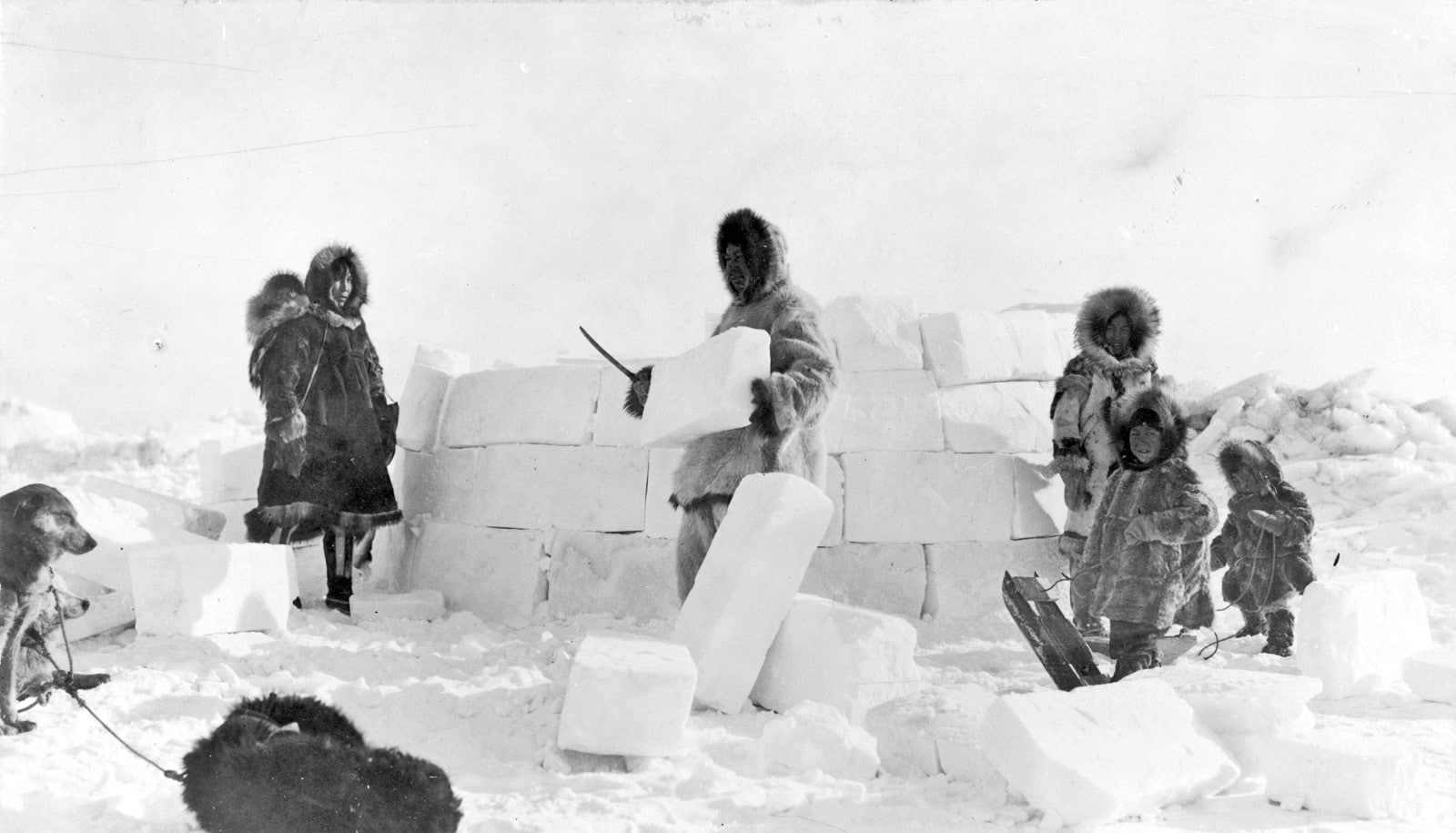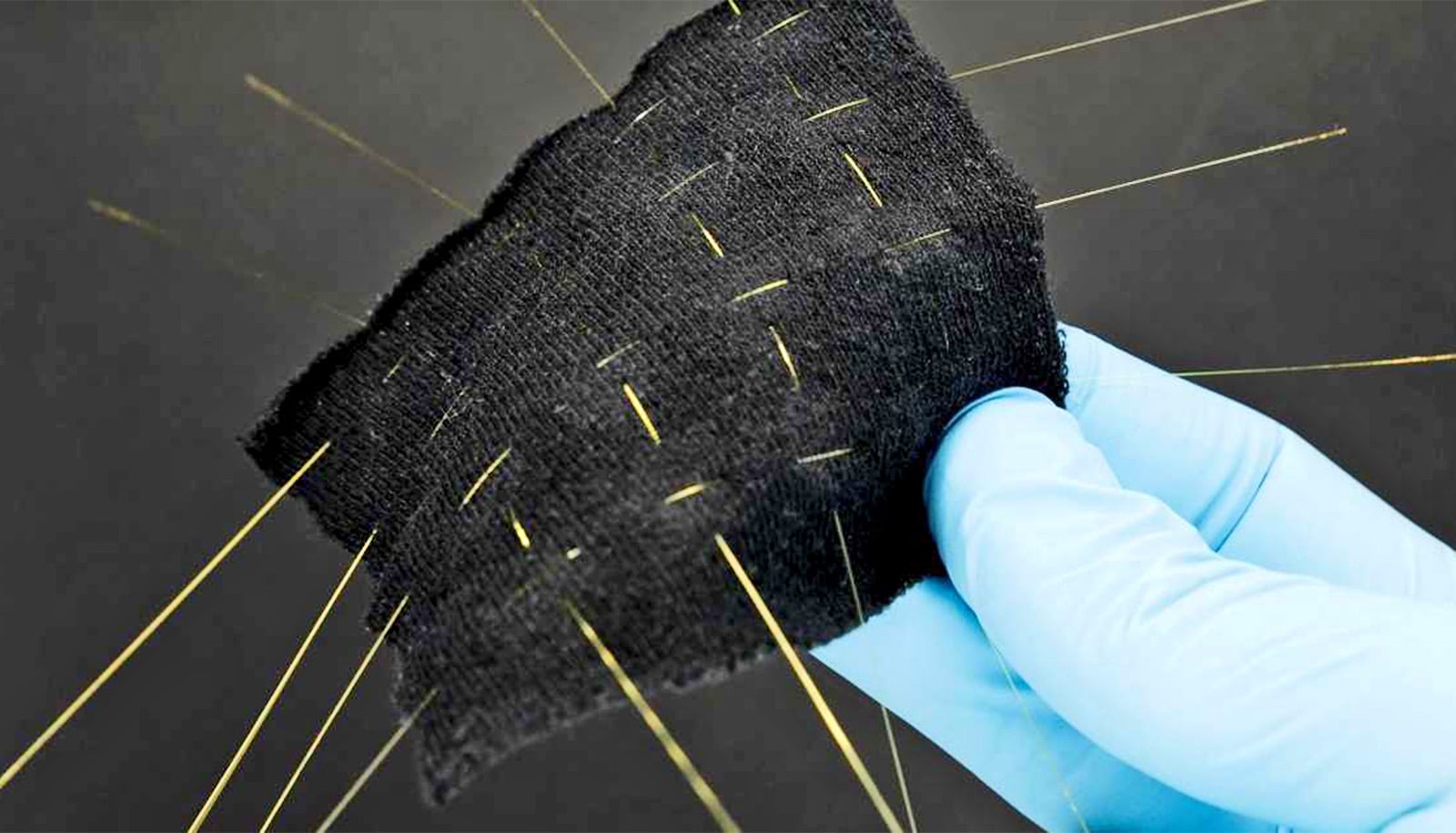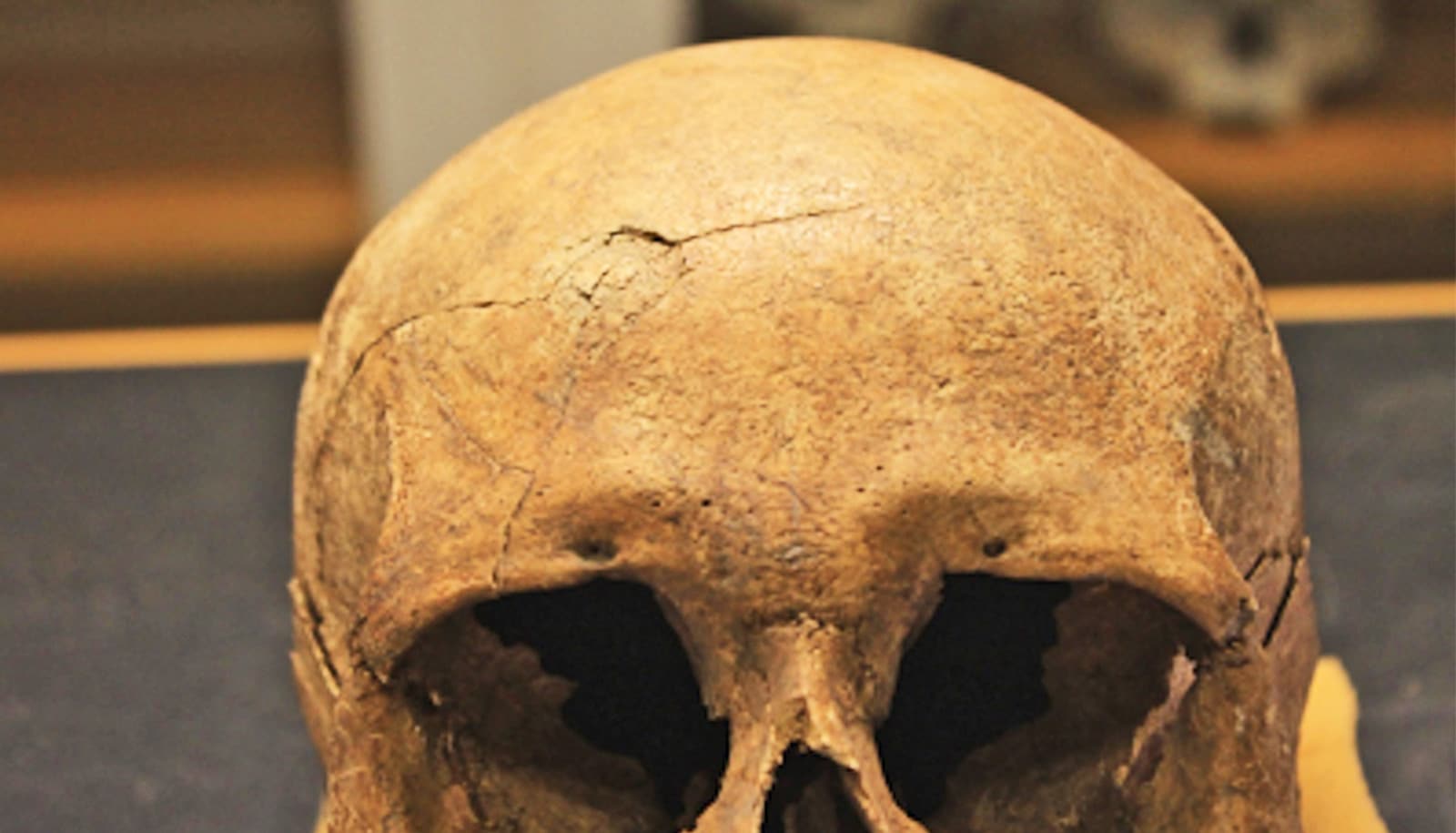The Dorset and Thule people, ancestors of today’s Inuit, created spun yarn some 500 to 1,000 years before Vikings arrived in North America, according to a new study.
The finding, made possible in part by a new method for dating fiber artifacts contaminated with oil, is evidence of independent, homegrown indigenous fiber technology rather than a transfer of knowledge from Viking settlers.
Study leader Michele Hayeur Smith, a research associate at the Haffenreffer Museum of Anthropology at Brown University, focused on artifacts from five Dorset and Thule archaeological sites in the eastern Canadian Arctic held in the Canadian Museum of History’s collections.
The research is changing the understanding of indigenous textile technology as well as the nature of the contact between Dorset and Thule peoples and the earliest European explorers of the eastern Canadian Arctic.

Here, Hayeur Smith and Kevin P. Smith, deputy director and chief curator of the Haffenreffer Museum, discuss the study and what it means for understanding the history of the high Canadian Arctic.
What was the impetus for undertaking this study?
Michele Hayeur Smith (MHS): I am a specialist in Norse textiles, and I was researching the production and circulation of textiles from the Viking age to the 19th century. I started this project because it came to my attention that there were huge collections of pre-modern textiles in Iceland, which is where I started out.
I was also interested in looking at women. Textiles happen to be a very gendered activity in Norse society—men had no involvement whatsoever with it. In Iceland, it became very important because it was a form of currency for almost 800 years: Everything was based on the value of cloth.
I eventually expanded my research to the rest of the North Atlantic to see what was going on in the other Norse colonies in terms of textiles. There were some fragments of cloth and yarn that had been found in the Canadian High Arctic, and there was an assumption that it came from the Norse.
I went through the collections at Canadian Museum of History—a sizeable collection of pieces of yarn that had been claimed to be Norse. The assumption was that Norse had taught the Inuit how to spin, that it was a cultural transfer.
What did you discover?
MHS: I went in thinking it was an interesting hypothesis that there was a Norse trading post in Baffin Island.
First, I performed an initial physical analysis of the material, which included spun sinew, spun yarn, woven textiles, and raw wool of unknown species. Second, I needed to date it. And third, I got permission to sample the pieces and do some DNA analysis to identify the animal fibers in them.
One textile piece from the high north was Norse, and several others from a site called Okivilialuk were also clearly fragments of woven European cloth, but not Norse. However, strands of yarn from southern Baffin Island, at sites called Nanook, Nunguvik, and Willows Island 4, were obviously different, and not Norse.
This yarn, when I analyzed it, immediately struck me as distinct. The materials were wrong for Norse textiles, made of maybe musk ox or arctic hare rather than sheep or goat. The fibers were very tightly spun, very consistent, with very little variation in how it was made, which is not what you see in Norse textiles.
At that point, we worked with a commercial laboratory, Beta Analytic, using the protocol Gørill Nilsen [of the Arctic University of Norway] developed, which is critical in accurately dating textiles contaminated with marine mammal oils.
In the high Canadian Arctic, people live predominantly off marine mammals. They would hunt seals, whales, and other animals and use the fats for a range of purposes. The oils from these mammals permeate archaeological sites and artifacts, including textiles. Because of what is known as the marine reservoir effect, in which sea mammals absorb ancient marine carbon, the radiocarbon date of artifacts with marine oil on them can be thrown off by 400 to 800 years.
Nilsen’s method essentially “shampoos” out the oils so Beta Analytic could use Accelerator Mass Spectrometry (AMS) dating to give us an accurate age.
And you used this new method to date the yarn and textile samples?
Kevin P. Smith (KPS): First, we tested Gørill’s method on two pieces of cloth—we split one piece of yarn and tested it without using her method. The date came back older than any known date for human occupation in the Arctic, so we knew it was contaminated; but after we used her method to clean the sample, we re-dated it and it fit other evidence from the site beautifully.
Then we tested her method on another piece of cloth whose age we already knew and received an identical date. These tests showed us that the method could remove contaminants without damaging the cloth and affecting dates on it.
Then, we applied her method to one piece of spun sinew and seven pieces of spun yarn from Dorset culture sites, to one piece of Norse textile from an ancestral Inuit, Thule culture site, and to two of those mysterious pieces of European cloth from Okivilialuk.
What did the AMS date tell you about the yarn and textile samples?
KPS: The results were jaw-dropping.
The oldest Dorset pieces were made almost 1,000 years before the Vikings settled in Greenland, around 1000 [CE]. In fact, the oldest piece of yarn, from a site on Willows Island, was dated to between 15 [BCE] and 50 [CE] And the most recent piece of Dorset culture yarn was spun around 725 [CE]. We knew then that the Dorset had been spinning yarn for more than a thousand years before the Vikings arrived in Greenland and was a consistent part of their culture for at least 800 years!
It’s also interesting that there appears to be no evidence that the Dorset people shared this technology with the Thule people, ancestors of today’s Inuit, who migrated across the Canadian Arctic and eventually to Greenland, in the late 1200s [CE].
However, when we turned to the piece of woven cloth from an ancestral Inuit site called Skraeling Island, we confirmed that those Thule ancestors of today’s Inuit were in contact with Norse explorers in the High Arctic during the late around 1275 [CE], almost 300 years after the Vikings had tried, unsuccessfully, to establish a colony in North America.
Finally, those pieces from Okivilialuk were both woven in the 1500s, suggesting that the Inuit there were in contact with some of the earliest post-medieval explorers of the Arctic, including Martin Frobisher [an English navigator who reached Labrador and Baffin Island in 1576].
In the study, you note that archaeologists have been somewhat reluctant to acknowledge the possibility of an indigenous fiber technology. Why do you think that is?
MHS: I would say that the assumption that indigenous people did not know how to spin is ethnocentric. This is a problem in our field.
The sewing skills and abilities of Arctic peoples is unbelievable. They are able to stitch garments made out of gut that are entirely waterproof because the stitching they’re using is so sealed and so tight. If you’re already spinning sinew because you’re making thread out of it, and you happen to come across a piece of musk ox hair on the ground, you know how to spin. It’s a very intuitive technique. I’ve also seen baskets made with Thule material. If you know how to make baskets, you know how to weave.
Why is the idea of indigenous fiber technology shocking, surprising people so much? I don’t know.
What other questions do your findings raise?
KPS: One of the big questions that it raises is, what is the fiber technology of the Dorset? It also shows that the history of contact between various Indigenous cultures of the North (the Dorset and the Thule) with one another and with different European explorers was more complex than expected—and can be unraveled with such unexpected artifacts as yarn and cloth.
But I think the most important finding is that the analyses document nearly 1,500 years of creativity, innovation, selective acquisition and use of textiles by the Indigenous people of the Arctic rather than forcing us to believe that spinning yarn and other cultural changes in the North required a brief period of technological transfer from Europeans.
The research appears in the Journal of Archaeological Science. An additional author is from the Arctic University of Norway.
Source: Brown University



